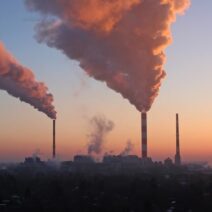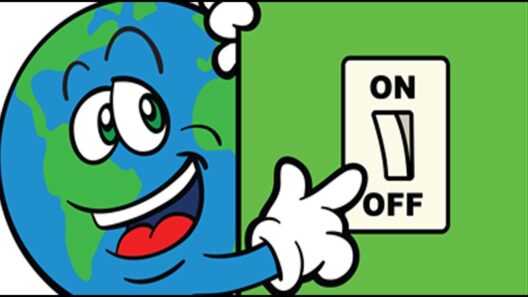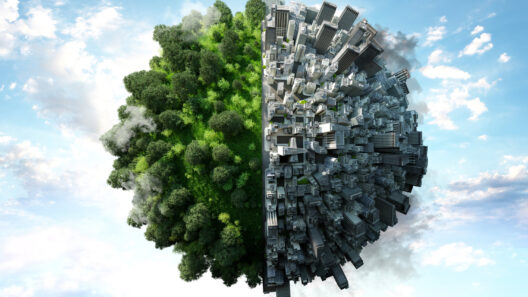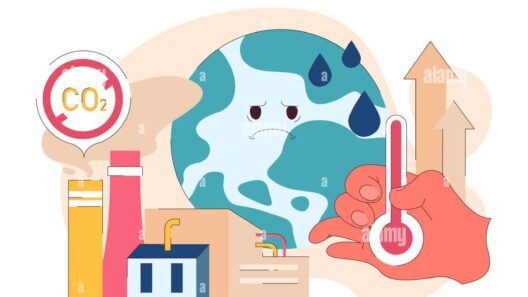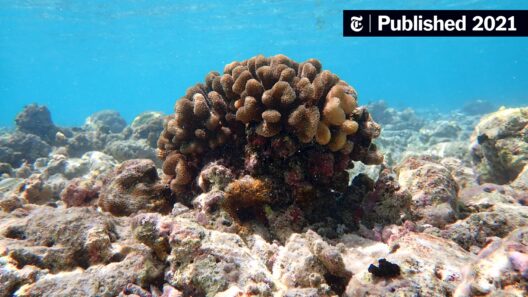As the world’s temperatures rise due to anthropogenic climate change, one of the most visible manifestations of this escalating crisis is the alarming phenomenon of melting ice. From the expansive ice sheets in Greenland and Antarctica to the perennial sea ice in the Arctic, the gradual thawing of these frozen realms significantly contributes to rising sea levels. This intricate interplay between melting ice and an increase in oceanic volumes poses a dire threat to global ecosystems, human settlements, and the very fabric of our societal constructs.
The polar regions, once considered remote territories, are now at the forefront of climate change discussions. The stark imagery of melting glaciers and fracturing ice shelves captivates the public’s attention. Yet, it is imperative to delve deeper into the ramifications of this melting ice, revealing the complex reasons behind our collective vulnerability. For instance, the thermal expansion of seawater, combined with the influx of freshwater from melting ice, disrupts oceanic currents, which are essential for regulating global weather patterns.
One of the most concerning aspects of melting ice is its effect on sea level rise. According to peer-reviewed studies, the melting of the Greenland and Antarctic ice sheets is responsible for approximately one-third of the global sea level rise since the 1990s. As glaciers disintegrate and their meltwater flows into the oceans, alarmingly, they contribute to an average rise of about 3.3 millimeters per year. This may seem minuscule on a short-term scale, yet it compounds over decades to pose significant threats to coastal communities across the globe.
In addition to the direct effects of sea level rise, the collateral consequences are equally unsettling. Coastal cities such as Miami, New Orleans, and Jakarta face an existential crisis as they grapple with flooding that once occurred only in rare instances. These urban centers are now experiencing recurrent inundation, leading to heightened maintenance costs and eventual displacement of populations. The genesis of climate refugees is not merely a theoretical concern; it is becoming a reality as people are forced to abandon their homes due to rising waters.
The linkage between melting ice and altered weather patterns further illustrates the profound impact of global warming. As fresh water seeps into oceans, it alters salinity, subsequently affecting ocean currents and the climate zones they encompass. This disruption may consequentially foster more erratic weather phenomena, including intensified storms, prolonged droughts, and increased prevalence of heatwaves. Such occurrences jeopardize agricultural sectors, water resources, and overall ecosystem stability.
Moreover, the melting Arctic ice serves as a litmus test for the planet’s health. It is a region sensitive to even the slightest temperature perturbations. The loss of reflective ice surfaces accelerates warming, as darker ocean water absorbs substantially more solar energy than ice. This feedback loop exacerbates temperature increases, continually diminishing the extent of ice cover and further accelerating the cycle of global warming.
The ramifications of melting ice extend beyond ecological and meteorological implications; they permeate into economic realms as well. The potential for untapped resources, such as oil and gas beneath the Arctic ice, poses the tantalizing prospect for energy corporations. However, extraction activities are fraught with risk—not only in terms of environmental degradation but also due to the geopolitical tensions that arise over these territories. The delineation of maritime boundaries is increasingly contentious, and as ice recedes, nations vie for access to these valuable resources, leading to potential conflicts in an already fraught global landscape.
Furthermore, the melting polar ice cap reveals ancient secrets trapped within its frozen depths. As ice sheets recede, they expose fossils and microorganisms preserved for millennia. This scientific treasure trove could provide invaluable insights into Earth’s climatic history. Nevertheless, it also signals a potential release of long-dormant pathogens. With permafrost thawing at alarming rates, there is a legitimate concern about the re-emergence of microbes that pose health risks to human populations.
In light of these multifaceted challenges, it is paramount to foster awareness and advocacy aimed at mitigating this pressing issue. Political action, public mobilization, and scientific innovation are essential in addressing the climate crisis. Transitioning towards renewable energy sources, enhancing energy efficiency, and preserving carbon sinks are achievable steps that societies can take to temper the severe consequences of global warming.
Furthermore, grassroots movements have sprung up around the world, uniting individuals concerned about the environment. These collective efforts are critical in influencing policies and fostering a culture of sustainability where individual choices see a collective impact. Whether through reducing personal carbon footprints or advocating for systemic change, every action counts toward curbing the rise in global temperatures and preserving our planet’s icy bastions.
Ultimately, the relationship between melting ice and rising seas epitomizes the intricate tapestry of our planet’s climate system. The evidence is irrefutable: as global temperatures ascend, our ice masses will continue to recalibrate, reshaping coastlines and disrupting life as we know it. To ignore this phenomenon is to jeopardize not only present generations but also the myriad of life forms that depend on stable climate conditions for survival. It is a clarion call for unity and action, a reminder that the health of our planet ultimately rests in our hands.


